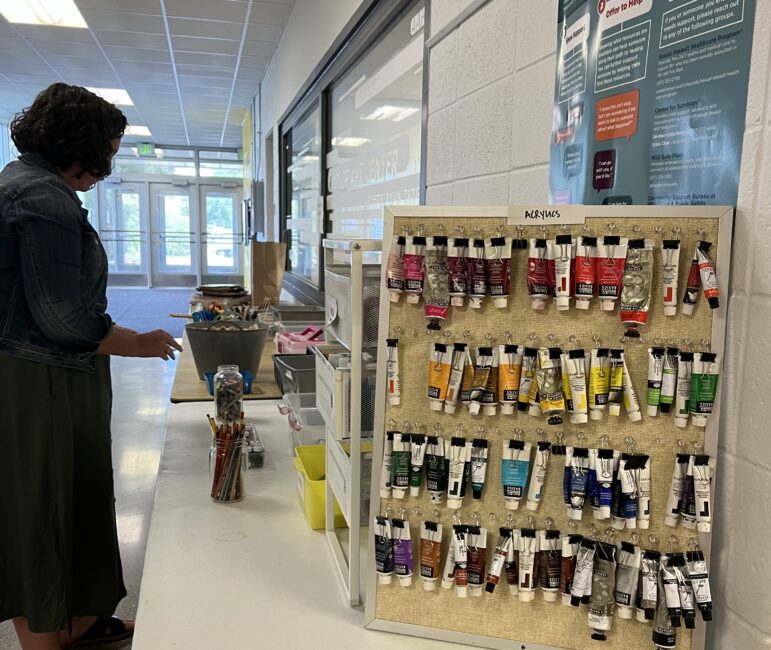Tables of half used tubes of paint, colored pencils and various colorful materials draw MSU students to the Kresge Art Center every semester. But there is something missing from this art sale: the price tags.
“Supplies are just expensive,” Erica Hooker, the academic advisor for students majoring in Art, Art History and Design said. “It’s a hefty cost for students.”
This is why Hooker started this art donation “sale” last spring and plans to keep up the tradition. At the end of every semester she encourages students to donate their gently used art supplies that they no longer need, which she then sets aside for students who need them in the future.

Hooker explained how art supplies can easily cost more than the typical class textbook, and with just two studio courses on their schedule, students can easily spend $300 on supplies alone.
“I have spent countless money myself as an art student so I understand the cost of it,” she said.

This can cause many students to be apprehensive about majoring in fine art.
“I think one of the most intimidating things with our major is the fact that you spend so much money in and out of college for your profession,” said Cam Carmichael, a junior at MSU majoring in studio art. “It’s really sad to think about how much of a class gap there is to studying art.”
Students majoring in art and design understand this issue all too well. Anya Babayan, a graphic design major and senior at MSU, said that studio fees and materials required for art classes can add up.
“I’m majoring in graphic design, but we still have to take a lot of other studio classes,” she said. “You would think tuition would cover all the costs of supplies you need to use, or fees for using what is already here.”
Babayan said that this can lead to a lot of excess supplies, especially if certain items are really only needed for one class.
“They make you get a lot, but that’s why there is a lot to donate at the end,” she said.

Hooker decided to start giving away donated art supplies after reading an article about Indigo Hippo, a non-profit “art supplies thrift store” in Cincinnati, where people can buy second hand art materials with their pay-what-you-can policy. However, instead of using their policy, she allows students to take whatever they want for free, limiting each student to a 10 item cap.
“It’s a random side project but it’s been really cool to see the things that have been donated,” Hooker said. “We once had 15 oil paints that were $20 apiece that were there for students to just grab, they didn’t have to pay for it.”
At the end of every semester, Hooker sends emails to students and staff within the department of Art, Art History and Design encouraging them to donate. She leaves a box outside of her office in the Kresge Art Center for students to drop off their supplies.
“We had a lot of faculty drop off art supplies, and I even cleaned out my own house because I have so much that I don’t use and I would rather give it to a student,” she said.
This has allowed students to experiment with different media to hone in on their crafts. For example, this semester Carmichael noticed a large supply of colored pencils at the sale.
“(It) influenced me to start using colored pencils in my work and kind of develop my style a little bit better,” he said.

Hooker hopes that students donating and using second hand art supplies will become more of a permanent thing within the school of Art, Art History and Design.
She said that eventually she wants students to be able to come to her office to use it as a “food pantry” for art supplies at any point in the semester. “It hasn’t gotten to that point yet, but that is the goal of it.”